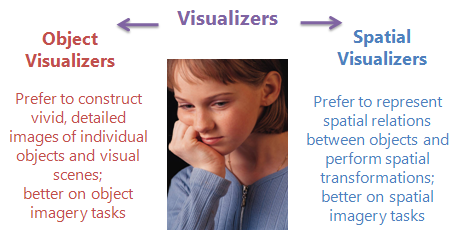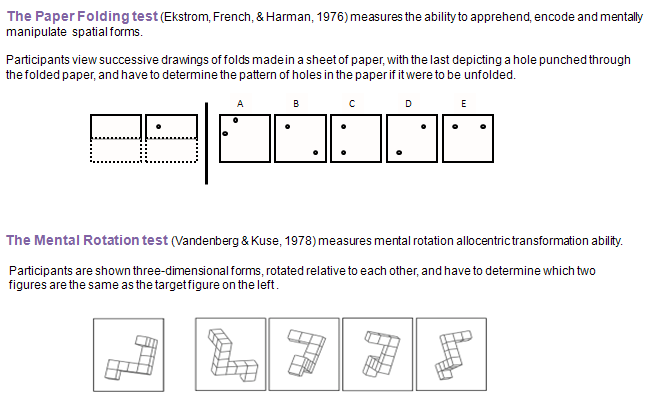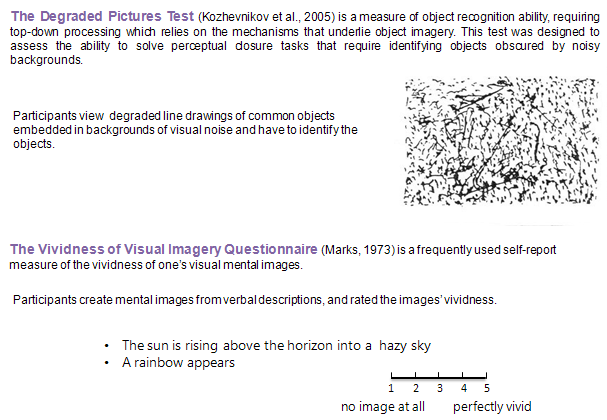Mental Imagery and Human-Computer Interaction Lab
Object-Spatial Dissociation in Individual Differences in Visual Imagery
Based on recent data from cognitive neuroscience and behavioral research about the existence of two anatomically and neurologically distinct visual, object and spatial visual system
in perception, working memory, and imagery, (Ungerleider, & Mishkin, 1982; Kosslyn, Ganis, & Thompson, 2001), we propose a new framework of individual differences in mental imagery. Specifically, we investigate the dissociation between individual differences in object visualization ability (processing visual information about appearances of objects and scenes in terms of their pictorial properties) and spatial visualization ability (processing visual information about spatial relations between objects or their parts, and performing mental spatial transformations and manipulations) and how these different types of imagery are used in different professional domains (e.g., science, visual arts, architecture).
Our research into the object-spatial dissociation follow three directions:
- Neural correlates of object vs. spatial visualization abilities
- Ecological validation of individual differences in object vs. spatial ability
- Developmental patterns of object vs. spatial visualization abilities
Our central finding is that some individuals use imagery to construct vivid, concrete, and detailed images of individual objects (object visualizers), whereas others use imagery to represent the spatial relationships between objects and perform spatial transformations, such as mental rotation (spatial visualizers). Moreover, our behavioral results showed that there is a trade-off between object and spatial imagery abilities
: while object visualizers score poorly on spatial imagery tasks but excel on object imagery tasks, spatial visualizers score high on spatial imagery tasks
but poorly on object imagery tasks
(Kozhevnikov, Hegarty, & Mayer, 2002; Kozhevnikov, Kosslyn, & Shephard, 2005; Kozhevnikov, Blazhenkova, & Becker, 2010).

Recently, we designed the Object-Spatial-Verbal Questionnaire ( OSIVQ
) as an assessment tool for distinguishing between object visualizers, spatial visualizers, and verbalizers (Blazhenkova & Kozhevnikov, 2009) The OSIVQ assesses different visual style preferences effectively and quickly, which makes it highly useful in applied settings (e.g., education, vocational guidance), and for psychological research (e.g., studying object and spatial visual and verbal processing)




